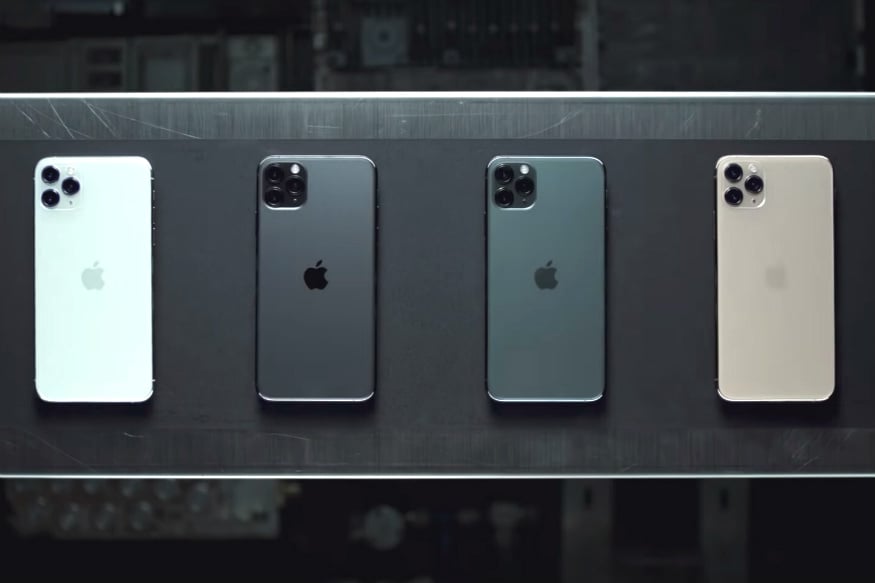 While a weakened Indian economy continues to wreak havoc and affect key industries, jobs and the average spending potential, shipment volumes and sales of premium smartphones have maintained consistent growth over the past two quarters, and is expected to continue doing so. Among other factors, one of the biggest reasons is the altered perception of smartphones as essential commodities, driven by the rise of digital payments and essential services that can be done with a smartphone.
While a weakened Indian economy continues to wreak havoc and affect key industries, jobs and the average spending potential, shipment volumes and sales of premium smartphones have maintained consistent growth over the past two quarters, and is expected to continue doing so. Among other factors, one of the biggest reasons is the altered perception of smartphones as essential commodities, driven by the rise of digital payments and essential services that can be done with a smartphone.
“The rise of digital payments is indirectly causing a rise in smartphone sales and making smartphones to be perceived as an essential equipment. Further, for the premium segment, the smartphone growth really boomed about three or four years ago, so a lot of people are making upgrades to their devices around now. So, those doing the upgrade will always pay more than the previous time based on experience of using a device, which is causing an uptick in the ‘premium’ segment,” says Shobhit Srivastava, research analyst, mobile devices and ecosystem at Counterpoint Research.
Case in point lies in the growth of premium devices in India in Q2 2019 (April-June), where the price bracket of $400-600 (Rs 30,000-45,000) was the second fastest growing smartphone segment in India, according to market research firm, IDC. As Upasana Joshi, associate research manager of client devices at IDC India stated in the firm’s quarterly shipment report for Q2 2019, “$400-600 was the second-fastest-growing segment with 16.3 percent YoY growth in Q2. OnePlus led this segment with a 63.6 percent share at the back of the newly launched OnePlus 7 series. In the premium ($500+) segment, Apple bettered Samsung for the leadership position with an overall share of 41.2 percent, as the iPhone XR demand saw an uplift after the price drop and aided by heavy promotional activities.”
While this signifies a positive market trend, the next few months will be crucial in terms of how the market reacts to the slowdown of India’s economy. Navkendar Singh, research director of devices and ecosystem at IDC India, states, “The slowdown has really not hit the smartphone industry as of now, and the litmus test lies in what will happen in the next two months, until the end of October, or mid-November. With this being the largest quarter from the sell-in (shipments) point of view, even if the (shipment) volumes grow despite the economic slowdown, there is still concern around overall smartphone sales and industry growth slowing down. We should remain cautious, and the next 60 days will define the fortune of this industry till as late as H1 2020. If the next 60 days do not do well in sales, there will be massive leftover stock till at least March or April 2020.”
Singh refers to the industry movement observed last year during the same period. “Last year, there was no narrative of an economic slowdown, and companies shipped in about 43 million units in Q3 2018. But, some brands had such heavy stock for the period, that they had a problem of liquidating it until as late as March 2019,” he says.
Counterpoint’s Srivastava, however, has a more upbeat outlook in terms of his expectation of the industry. He says, “In the slowdown of India’s economy, areas like the automotive industry is being affected first. The obvious point here is that the price difference between a car and a smartphone. Plus, a smartphone is essential nowadays since it handles crucial services and apps. People are hence willing to pay for a device because it has become essential, and is no longer a lifestyle choice. This growth will hence continue despite the economic slowdown, and the cumulative industry growth is expected to rise to double digits despite the slowdown.”
In terms of premium smartphones, Srivastava reckons that brands such as Apple, Samsung and OnePlus will team up with financial bodies to continue pushing the envelope in terms of how much the average Indian buyer spends on a smartphone. He says, “There are bank offers, cashbacks, no-cost EMIs, offers from third party NBFCs — all of these are making a user buy a phone that is more expensive than what they can really afford. This trend will remain. Steps such as these will continue, because India is the only large market that will continue to grow, and Samsung and other brands will consider steps like these to ensure that the market remains in the positive.”
IDC’s Singh, however, opines that despite a slight upward curve in the average selling price (ASP) of a device, premium phones will mostly retain their pace of growth, and not see any exceptional rise in market share. “The ASP in the past two years in India has moved from $130-135 (~Rs 9,000) to $160-165 (~Rs 12,000). In the sub-<$100 (~Rs 6,500) segment, OEMs realised that the returns will not commensurate their investments. Plus, feature phones are still going strong, and buyers of that segment are not migrating to smartphones as swiftly. Hence, many went to the market to buy a Rs 5,000 phone and ended up with a device priced at around Rs 8,000, thanks to discounts and financing schemes. This is what created the gradual upward shift of ~$20 in the average price. However, over the past 2-3 quarters, the ASP has remained at $155-160, and will largely remain constant.”
With the festive season in sight, premium smartphones priced at around Rs 30,000 and above look set to beat the economic downturn and maintain their consistent growth, in line with the rest of the smartphone industry. As Singh says, “Apple, Google, OnePlus and Samsung will have an impact, since the upcoming quarter is where more than a third (~33 percent) of all sales in the premium segment happen in India. The same holds true for the rest of the price bands as well. As a result, despite the growth in the premium segment, its market share is not more than 6-7 percent of the entire industry. Therefore, the growth in premium smartphone sales would not have a significant impact, at least on the ASP of smartphones in India.”
[“source=news18”]




